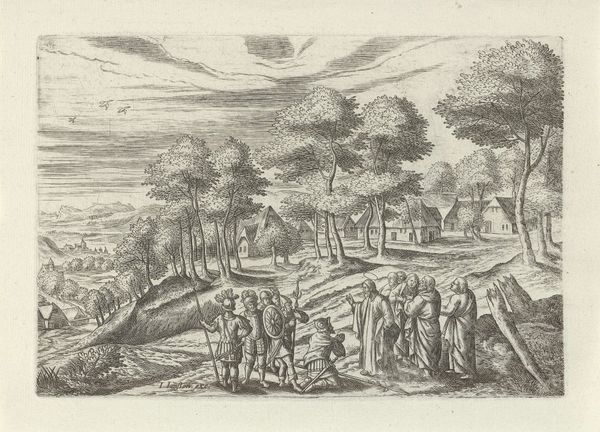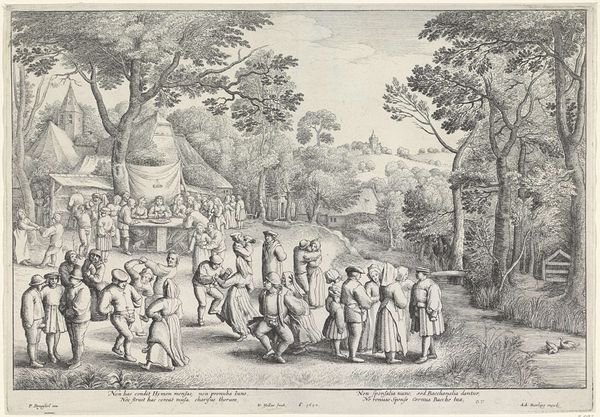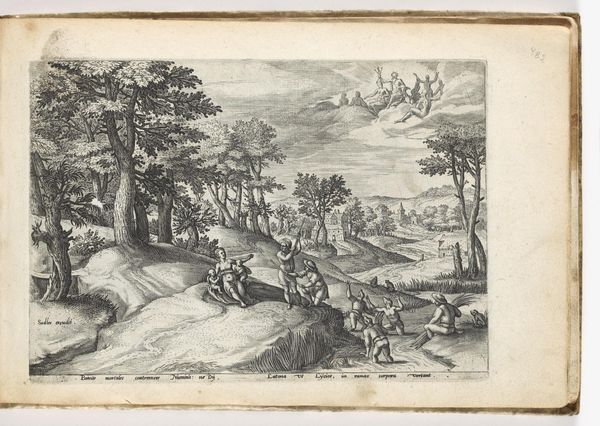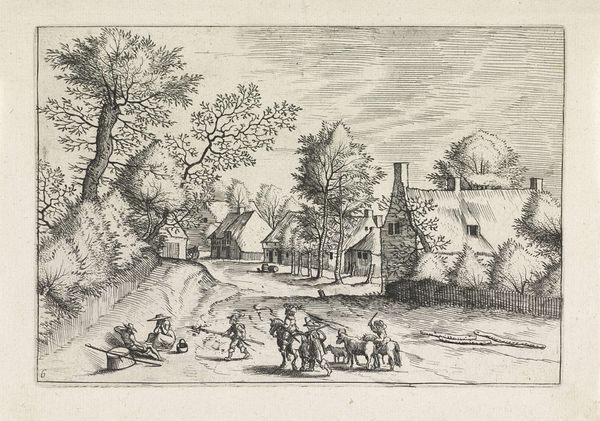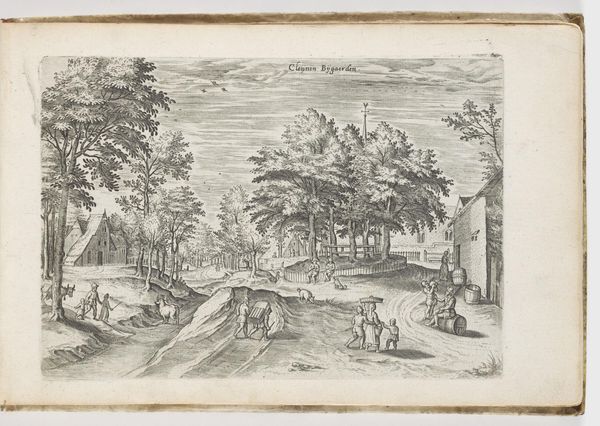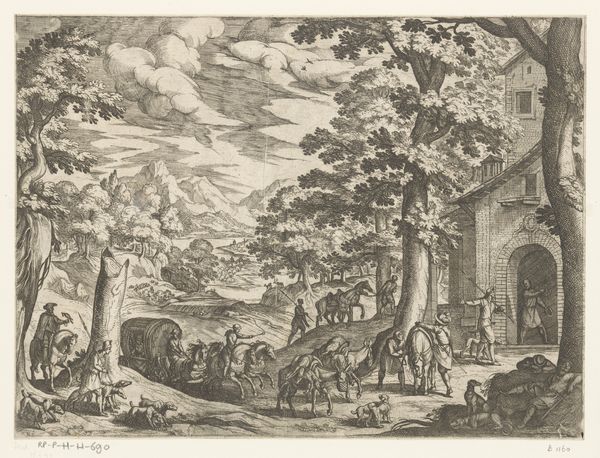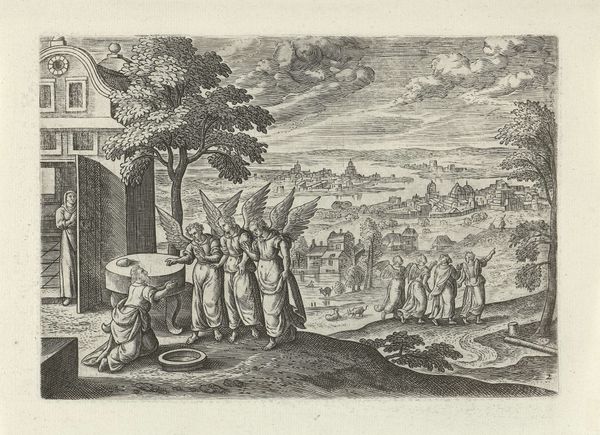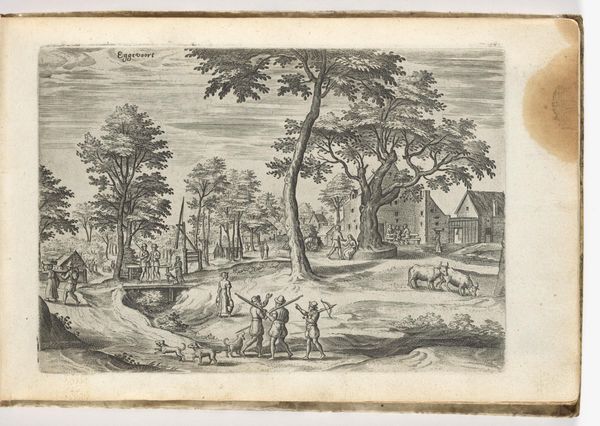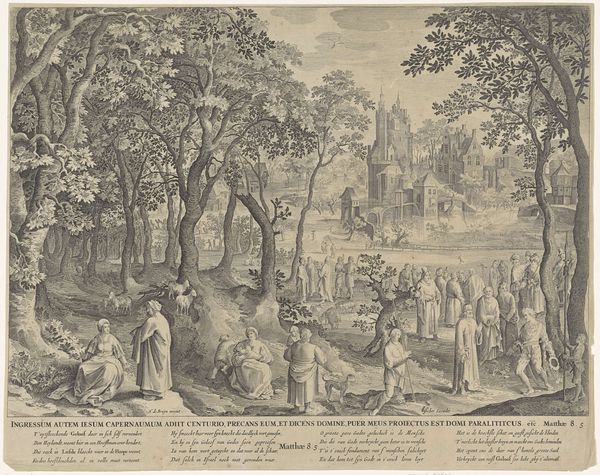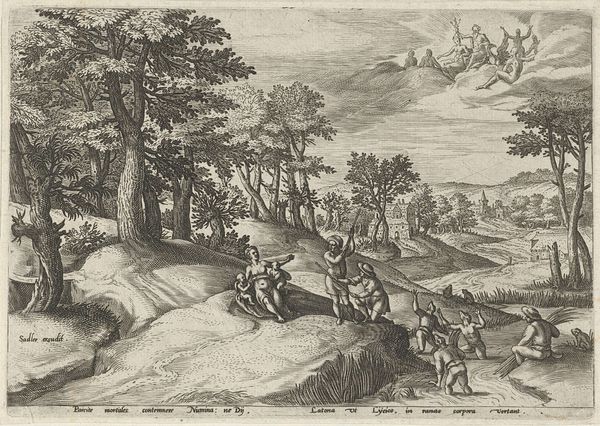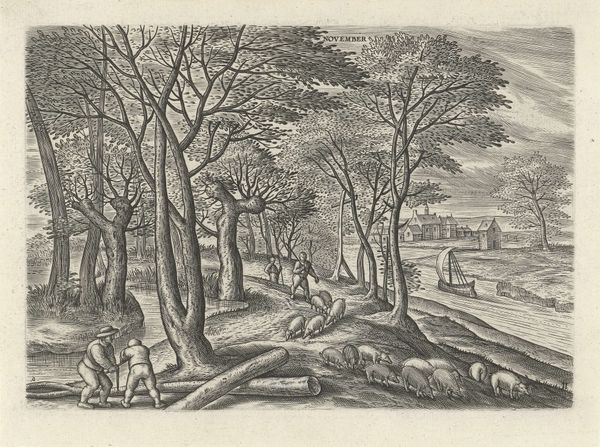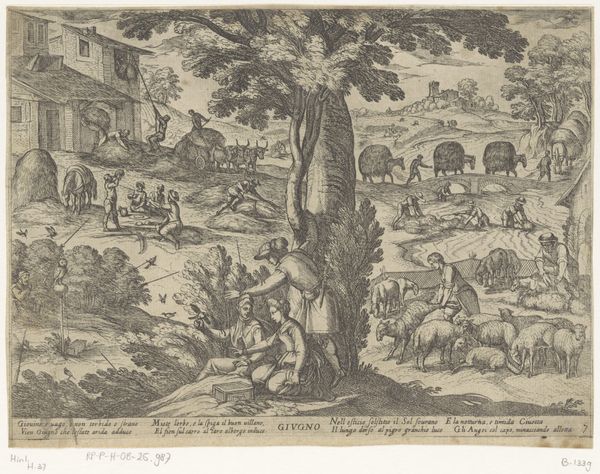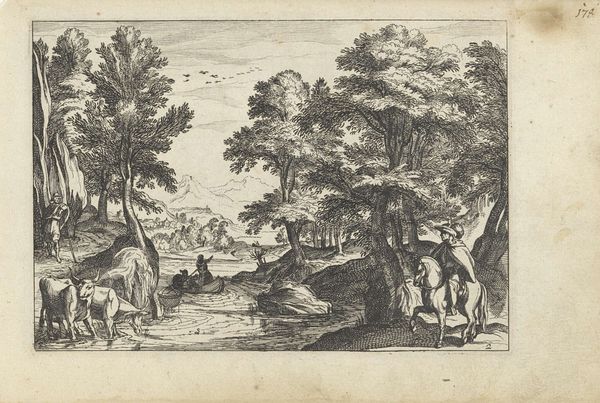
print, engraving
# print
#
landscape
#
genre-painting
#
northern-renaissance
#
engraving
Dimensions: width 165 mm, height 116 mm
Copyright: Rijks Museum: Open Domain
Editor: So, this print is called "Mei", made around 1560-1652 by Julius Goltzius. It’s an engraving, and it's currently at the Rijksmuseum. I'm really drawn to the sense of community and the focus on daily life, it seems like everyone's just enjoying the start of summer. How do you interpret this piece? Curator: It is remarkable how Goltzius captures the exuberance of May, isn’t it? It’s less a snapshot and more a carefully constructed representation, brimming with symbolism. Think of the May tree celebrations, ancient rituals honoring fertility and the renewal of life after the long winter, and its pagan connotations, that are deeply ingrained in European culture. Does that resonate with you? Editor: Absolutely. I notice the people are gathering in different clusters around the print. Some are dancing, others are having picnics, which I suppose speaks to how communities bond through shared experiences. Curator: Precisely! Note the figures dancing. Dancing was often associated with abandon and earthly pleasures, a releasing of societal constraints especially around springtime festivals, while a bountiful table of food represents plenty and community. Editor: So, even seemingly mundane scenes contribute to the overall symbolism? It feels like the artist embedded many layers. Curator: Everything contributes. Consider how landscape itself represents more than just a backdrop. Here, the flourishing landscape represents the reawakening of nature and of human desire, something of a return to the Garden of Eden. Every detail has meaning. Looking closer at details, we can also understand this artist's memories of cultural values. Editor: That is fascinating! Thanks to your perspective, I now see how this print speaks volumes about Northern European society, its symbols, values, and rituals. Curator: And by analyzing its iconography we’ve also had a small glimpse into ourselves and the way these cultural echoes can still resonate.
Comments
No comments
Be the first to comment and join the conversation on the ultimate creative platform.
